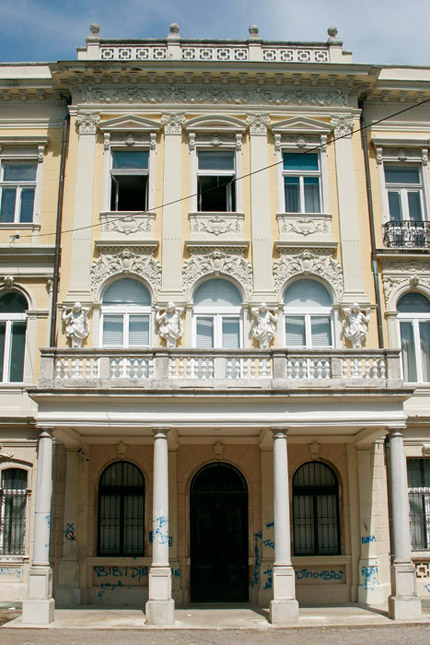
In the 18th century, Baron Mihovil Androcha ordered the construction of a simple summer house in the middle of a vineyard and an olive grove on the hill just above the northern city walls. That villa then changed numerous notable owners, consuls, mayors and businessmen from the Orlando and Pasquale families, Andrija Ljudevit Adamić, John Leard, Giovanni Ciotta, Baron Vranyczany and finally Archduke Joseph Habsburg (Bratislava 1833 – Rijeka 1905), a passionate linguist, explorer of the Romani culture and a botanist, cousin of Austro-Hungarian Emperor Franz Joseph I, who arrived in Rijeka with his family. He bought the villa in 1881 as a winter residence where he stayed with his wife, Archduchess Klotilde and their seven children. Due to the necessary adjustment to the customs of court life and gatherings of the aristocracy, he ordered the radical reconstruction of the building in 1892 based on the design of the famous Raffaele and Pietro Culotti and created the monumental building with its numerous balconies, porches, lodges and viewpoints, with luxuriously decorated front facade. The interior included numerous lounges, dining rooms, studies, bathrooms, bedrooms and a family chapel with rich architectonic sculpture work. Villa Giuseppe was surrounded by dense park vegetation and cultivated exotic and autochthonous plants, fountains, garden statues, walking paths, pools and greeneries based on Isidor Vauchnig’s design. This private botanical garden became the largest and richest park in Rijeka at the end of the 19th century and has kept some of its original beauty until this today as Nikola Host Park. Since 1926 the Villa has been the seat of the State Archives in Rijeka, and is open to visitors who, besides visiting the interior, can see some of the attractive exhibitions in the gallery area of the Archives.




